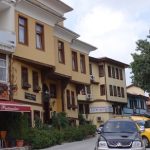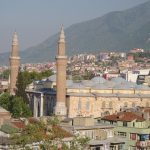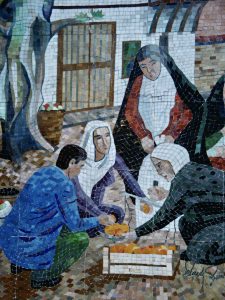 Bursa is such a huge and hilly city that it is not initially easy to appreciate that one of its oldest quarters was the walled Hisar (Fortress) area at the top of the hill facing the Zafer Plaza shopping mall and the Tophane (Arsenal) area immediately around it. Recent renovation of the old walls, while sometimes rather crude, has at least made it easier to recognise this once you get up the hill.
Bursa is such a huge and hilly city that it is not initially easy to appreciate that one of its oldest quarters was the walled Hisar (Fortress) area at the top of the hill facing the Zafer Plaza shopping mall and the Tophane (Arsenal) area immediately around it. Recent renovation of the old walls, while sometimes rather crude, has at least made it easier to recognise this once you get up the hill.
This is an excellent place to start an exploration of Bursa not just because the city walls date back to Bithynian and Roman times but also because this is where the first two Ottoman sultans, Osman and Orhan, were buried, high up where their spirits would have an eternal view of the leafy city they had conquered and made into the first Ottoman capital.
Their tombs stand inside the small Tophane Park which is dominated by a tall clocktower (the current model dates back to 1904) and edged with a tea garden. The two men are buried side by side in separate mausolea. If you look carefully at the floor of Orhan’s burial place it will be obvious that it has been built over the site of the Byzantine Monastery of St Elijah – the colourful opus sectile floor resembles those to be seen in the Church of the Pantocrator at Zeyrek in İstanbul and in the Church of St Michael the Archangel at Akçaabat on the Black Sea. 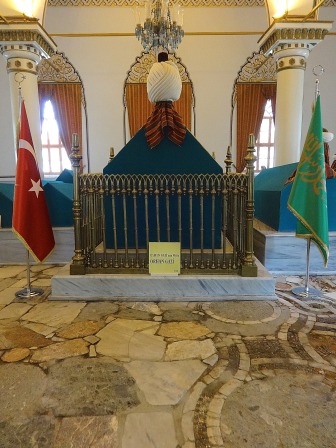 Tomb of Orhan Gazi with floor of lost monastery in foreground
Tomb of Orhan Gazi with floor of lost monastery in foreground
The Hisar
The city walls once had five main gates and 67 towers; two of the gates have been rebuilt but the others have been lost to road-widening. On the southern side a second line of walls offered added protection while on the northern side the royal palace existed inside a set of inner walls forming a keep. These walls have since been lost too but it’s possible to follow the inner walls for considerable stretches especially on the northern side around the Fetih Kapı where houses have been built into and onto the walls just as they were in İstanbul.
After paying homage to sultans Osman and Orhan, a good place to start exploring the Hisar is from in front of the reconstructed Saltanat Kapı (Hisar Kapı), or the Gate of the Rulers. This survived into the 19th century when it was damaged by a major earthquake in 1855. It was demolished completely in 1904 when the road was widened but rebuilt again in 2005 with its original kitabe (inscription stone) replaced over the gateway.
If you look to your right just inside the gates you’ll see the little Nilüfer Mescid that stands on the site of the first Ottoman darphane (mint). The first Ottoman silver coins were minted here in the third year of Sultan Orhan’s reign.
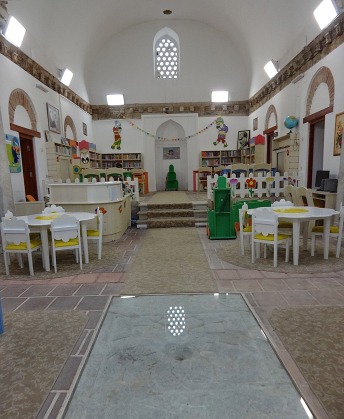 If instead you start walking uphill and to the left you will see a small building that serves as a children’s centre but that was originally the Lala Şahin Paşa Medresesi, built in 1339 as one of the first Ottoman seminaries and the first to be roofed over. Inside some of the columns reuse capitals taken from older Byzantine buildings.
If instead you start walking uphill and to the left you will see a small building that serves as a children’s centre but that was originally the Lala Şahin Paşa Medresesi, built in 1339 as one of the first Ottoman seminaries and the first to be roofed over. Inside some of the columns reuse capitals taken from older Byzantine buildings.
Further along the road is the early 14th-century Kavaklı Cami which was probably built on the site of a Byzantine church and has a fine fountain in its courtyard.
After that you will come to the pretty 18th-century Haraççıoğlu Medresesi, built by a family who used to have responsibility for collecting the cizya, a tax on non-Muslims. It was originally designed to be a tekke (dervish lodge) and is now reused as a library with a quiet and inviting tea garden in the grounds.
A little further along and you will come to one of the Hisar’s most attractive areas around the Üftade Cami (1571) and tomb complex which are grouped together with a couple of small cemetery plots full of Ottoman tombstones and roses – most of the graves are of relatives of the founder, Mehmet Muhyiddin Efendi (Üftade). Looking out from behind the mosque you will be able to see one of the most authentically restored towers on the walls. Steps also lead down to the rebult Tahtakapı (Throne Gate).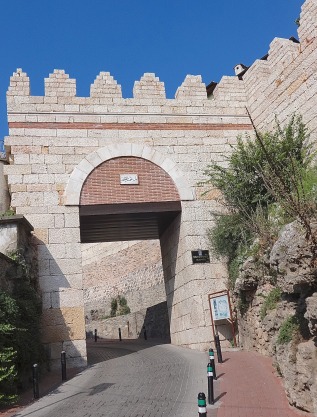
If you keep following the road around the walls you will come to the rebuilt Yerkapı (Ground Gate) with the small brick-and-stone Yerkapı Cami just inside it. On the southern side of the gate the outer wall has also been reconstructed although some people will probably regard the quality of the rebuilt work as poorly as some of that around the Belgradkapı in İstanbul.
Beyond the gate to the left is another pretty quarter full of soaring plane trees and Ottoman houses in varying states of repair intermingled with small early Ottoman mosques and old-fashioned bakeries. If instead you turn right you will be able to follow the wall right round to the gash where once stood the Fetih Kapı (Conquest Gate). It was through here that Orhan Gazi forced his way in 1326 to take the city for the Ottomans. On the outside of the gate is the Pınarbaşı area which has been home to a shady teahouse and picnic area for more than 100 years.
Beyond the Fetih Kapı you can keep following the walls round although they are in a fairly parlous condition and with many houses built into them. The site of the old Zindankapı (Dungeon Gate) is little more than a mess of rubble although there is another fine tower here too.
 Autumn picnic at PınarbaşıIt is not currently possible to reach the site of the old Kaplıca Kapı (Spa Gate) although you can see how the walls started to perch on the natural defences of a lofty rock at this point. Returning towards the Saltanat Kapı, however, there is no longer any trace of the walls, their place having been taken by a large hospital (in whose grounds the remains of the Bithynian palace were found) and a military base.
Autumn picnic at PınarbaşıIt is not currently possible to reach the site of the old Kaplıca Kapı (Spa Gate) although you can see how the walls started to perch on the natural defences of a lofty rock at this point. Returning towards the Saltanat Kapı, however, there is no longer any trace of the walls, their place having been taken by a large hospital (in whose grounds the remains of the Bithynian palace were found) and a military base.
Beyond the Hisar
Just beyond the Yerkapı a large Mevlevihane complex, mentioned by Evliya Çelebi but long used as a water depot, has been rebuilt. Part of it has been turned into a rather good museum (Turkish labelling only). The semahane has a gorgeous painted ceiling. Semas are performed there every Thursday at 7pm, with men seated on the ground floor and women in the gallery. Get there early to be sure of a seat.
If you have the energy (and it takes a lot of it!) to stride uphill behind the dervish complex you may be able to find a smaller complex associated with a holy man named Somuncu (Loaf-making) Baba, who is believed to have supplied bread to those constructing Ulu Cami at the end of the 14th century. You’ll be shown two niched spaces which are said to be the ovens in which the loaves were baked.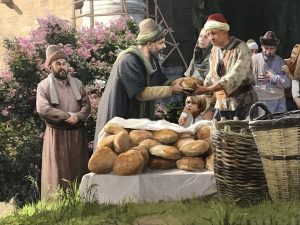
Far less onerous is to walk around the base of the rock on which the Hisar stands which will bring you to the old and rather picturesque Tophane market area. Prices here are pitched at those with less deep pockets.
Transport info
If you don’t want to climb the hill to Tophane there are local buses from Heykel. Escalators running up from opposite the Zafer Plaza may or may not be working. If they are, it will probably be the down escalator that’s in business!
Nearby areas

